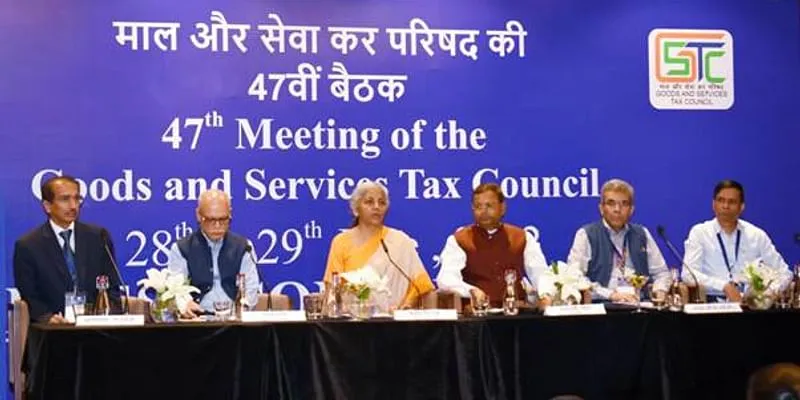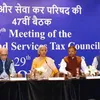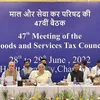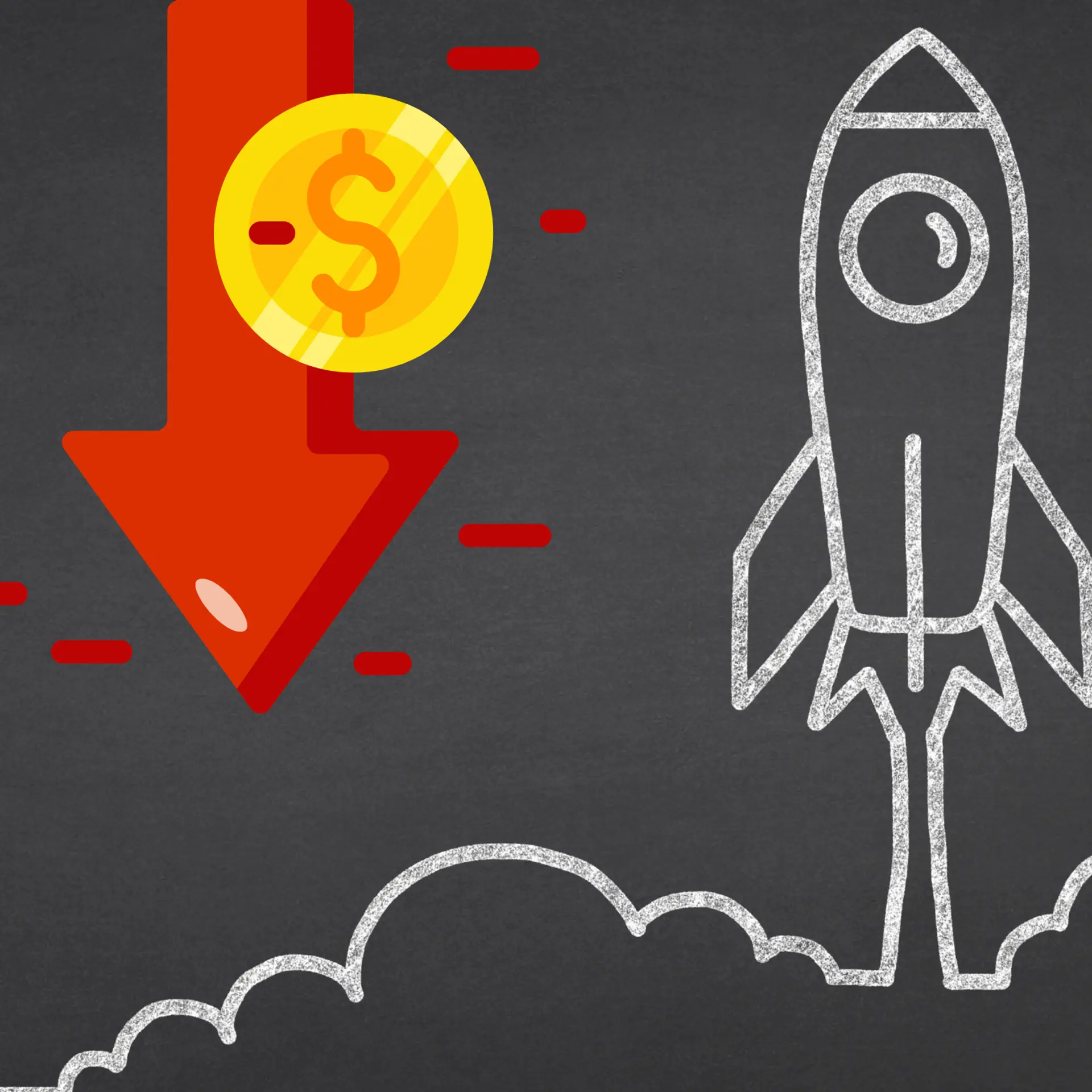5 years of GST: Tech usage to plug revenue leaks, Rs 1.3 lakh Cr monthly tax 'new normal'
As the government releases the June GST collection numbers on July 1, it is widely expected that the collections will follow the past four months' trend and be around Rs 1.4 lakh crore.
India's biggest tax reform, the Goods and Services Tax (GST), completes its half-a-decade journey on June 30, with many hits and some misses, and also brought about a paradigm shift in the use of technology to bring about tax compliance and making over Rs 1 lakh crore revenue collection every month 'a new normal'.
A nationwide Goods and Services Tax (GST), which subsumed 17 local levies like excise duty, service tax, VAT, and 13 cesses, was rolled out at the stroke of midnight on July 1, 2017.
Under GST, a four-rate structure that exempts or imposes a low rate of tax of 5 percent on essential items and a top rate of 28 percent on cars is levied. The other slabs of tax are 12 and 18 percent. In the pre-GST era, the total of VAT, excise, CST, and their cascading effect led to 31 percent as tax payable on average for a consumer.
Besides, there is a special 3 percent rate for gold, jewellery, and precious stones, and 1.5 percent for cut and polished diamonds.
A cess is also levied on the highest tax slab of 28 percent on luxury, sin, and demerit goods. The collection from the cess goes to a separate corpus Compensation fund, which is used to make up for revenue loss suffered by the state due to the GST rollout.
GST also represents an unprecedented exercise in fiscal federalism as the centre and states come together in the GST Council to thrash out modalities for the smooth functioning of the relatively new tax regime.
So far, the council has met 47 times and has taken measures, which made Rs 1 lakh crore GST collection per month 'a new normal' and is on the course to take the figure to Rs 1.4 lakh crore every month.
As the government releases the June GST collection numbers on July 1, it is widely expected that the collections will follow the past four months' trend and be around Rs 1.4 lakh crore.

Image source: PIB
The collections had touched a record Rs 1.68 lakh crore in April 2022. It had, for the first time, crossed Rs 1 lakh crore mark in collections in April 2018.
On the fifth anniversary of GST, the Central Board of Indirect Taxes and Customs (CBIC) tweeted "GST subsumed multiple levies and cesses, reduced compliance burden, removed regional imbalances and inter-state barriers, and significantly increased the transparency and overall revenue collection".
Over the past years, the government is proactively issuing circulars and clarifications to clear doubts regarding taxation under GST and ensure ease of doing business. More recently, the GST Council, in its 47th meeting in Chandigarh, has decided to ease compliance for small taxpayers who supply through the ecommerce platform.
Such suppliers, who make only intra-state supplies, need not seek GST registration if their annual turnover is less than Rs 40 lakh in case of goods and Rs 20 lakh in case of supplies.
To help tax officers in administration, GST Network, which provides the technological backbone for the indirect tax regime, is using artificial intelligence (AI) and machine learning (ML) to dish out newer data and plug revenue leakages.
Tax experts, however, seek a simpler structure for Goods and Services Tax, a structure that would ensure a seamless flow of input tax credit through the entire supply chain without losses.
Gunjan Prabhakaran, Partner and Leader - Indirect Tax, BDO India, said, "Over the past five years, the GST law has evolved and mitigated several issues faced by the taxpayers through timely clarifications and amendments."
He added, "However, the GST Council and the government should quickly address a few other hardships faced by taxpayers related to unwarranted and excessive issuance of show-cause notices (for reconciliations of financial numbers, grant of registration, etc.,) and introduce a robust, technology driven single assessment process, which would achieve the twin objective of ease of doing business and remove the cascading effect of taxes."
AMRG and Associates Senior Partner Rajat Mohan said, "In the last five years, GST law has matured at a fast pace. First, the focus was on compliance and technology. Sooner than later, it moved gears, and taxpayers were posed to self-regulate the annual filings."
"Now, it seems the law has entered the next phase, whereby litigation needs to be reduced by either replacing ambiguous tax laws or clarifying the practical application of technical issues. Businesses expect the government to resolve all sectoral issues like would BPO/KPO qualify as an intermediary, tax credit for capital expenditure on building, levy of GST on Extra Neutral alcohol (ENA), etc.," Mohan said.
While the GST administration has moved forward with alacrity, it is still a long way to go to achieve the full potential of GST and make it a true 'good and simple tax'.
With petrol, diesel, and ATF outside GST, a large part of the economy is still not covered by the indirect tax regime. Inclusion of petroleum products under the GST net could reduce costs for companies, tax experts say.
With emerging technology, there is the emergence of newer asset classes like virtual digital assets (VDA) or cryptocurrency. There is a need for clarity on whether they would be classified as the supply of 'goods' or 'services' and what would be the tax rate on them.
Tax rate rationalisation is something which would happen sooner or later. Current inflationary concerns may have derailed the plans to tweak rates and GST slabs, but it would eventually be a reality as both the centre and states need revenues and lesser slabs would mean a simplified tax regime.
Besides, the decision-makers in the council, too, have to work out a solution as state governments from July 1, 2022, stare at a stoppage of compensation for revenue loss due to GST implementation. When GST was rolled out on July 1, 2017, states were promised compensation from the cess fund for five years if their GST collection falls short of the 14 percent compounded revenue growth.
Most states have sought an extension to the compensation mechanism and a final decision is likely to be taken at the next GST Council meeting in Madurai in the first week of August.
Abhishek Jain, Partner Indirect Tax, KPMG in India, said, "Going forward, the government can consider setting up of a central authority to resolve conflicting AAR judgements across states and consider doing away with anti-profiteering provisions freeing businesses to set prices."
"Further, bringing petroleum and electricity under GST ambit will help prevent cascading and ensure further uniformity. Lastly, some checks can also be incorporated on system-generated GST notices to avoid any unnecessary harassment of taxpayers," Jain said.









